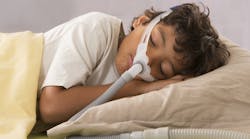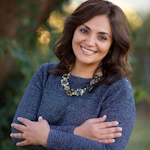Sleep apnea is a serious sleep disorder that can affect people of all ages, including children. Researchers estimate that obstructive sleep apnea (OSA) affects between 1% to 5% of children in the US.1 Pediatric sleep apnea is a challenging condition, but early diagnosis and appropriate treatment can help children lead healthier, more restful lives.
Identifying, diagnosing, and treating pediatric sleep apnea requires a multidisciplinary approach involving dentists, pediatricians, and sleep specialists. The journey to overcome this condition often starts in the orthodontic chair.
You might also be interested in: Childhood sleep apnea, by dental sleep medicine specialist Dr. Erin Elliott
Symptoms of pediatric sleep apnea
Sleep apnea symptoms can differ in adults and children. In children, common signs of sleep apnea include loud snoring with pauses or gasps between breaths, restless sleep, bedwetting, mouth breathing, daytime fatigue, difficulty concentrating, hyperactivity, irritability or impatience, and obesity.
Certain factors also increase children’s vulnerability to developing this condition. By being aware of these risk factors, dentists can identify children who may require further evaluation by a sleep specialist. Risk factors for pediatric sleep apnea include enlarged tonsils and adenoids, craniofacial abnormalities, Down syndrome, premature birth, allergies and asthma, and neuromuscular disorders, such as cerebral palsy.2
Timely diagnosis of sleep apnea is important. Left untreated, it can lead to serious health issues, including poor growth, learning difficulties, and cardiovascular problems.
How to diagnose and treat pediatric sleep apnea
Diagnosing and treating pediatric sleep apnea involves a combination of medical evaluation, sleep studies, and treatment options tailored to children’s needs. Every child should be screened for sleep apnea. Those children who present typical symptoms or have risk factors should receive further evaluation via overnight polysomnongraphy.3
For most cases of pediatric sleep apnea, the first line of treatment is to remove enlarged tonsils and adenoids. An adenotonsillectomy opens a child’s airway, which can improve their breathing during sleep. If a child’s tonsils and adenoids are not an issue, CPAP (continuous positive airway pressure) therapy may be recommended. This treatment involves wearing a mask connected to a machine that delivers a constant airflow to keep children’s airways open during sleep. Children may need an adjustment period to get used to wearing the mask, but CPAP therapy is highly effective at alleviating sleep apnea symptoms.
Some children have certain physical features that can lead to sleep apnea, such as a tongue tie or a high, narrow palate. A tongue tie restricts the tongue’s position and movement and can affect a child’s breathing. A frenectomy, a simple oral surgery to release the tongue’s frenulum, can resolve a tongue tie.
A high, narrow palate can also cause breathing difficulties during sleep due to airway obstructions. Children with this feature can be treated with a palatal expander to help direct growth in a deficient maxilla.
In some cases, lifestyle changes can also alleviate sleep apnea symptoms. Obesity is a known risk factor.4 Research estimates that sleep apnea affects up to 60% of obese children.5 Fat deposits on the upper respiratory tract can cause children’s airways to narrow, making it difficult for them to breathe. Promoting a healthy diet and regular exercise can help manage sleep apnea. Encouraging physical activity and providing a balanced diet rich in fruits, vegetables, and whole grains can aid in weight management.
Moreover, establishing a consistent sleep routine is important. Dentists should encourage patients to establish a regular bedtime and create a calm, sleep-friendly environment to improve sleep quality and reduce sleep apnea episodes. Dentists should also advise patients to stop their screen time at least one hour before bed.6
Sleep apnea can pose significant challenges for children and can lead to serious health problems, including cognitive delays and heart issues. But with the right diagnosis, treatment, and support, children can reduce their symptoms, improve their breathing and sleep quality, and get the rest they need to grow and thrive. Dentists play an important role in this process.
This article originally appeared in DE Weekend, the newsletter that will elevate your Sunday mornings with practical and innovative practice management and clinical content from experts across the field. Subscribe here.
References
- Fry A, Truong K. Sleep apnea in children. Sleep Foundation. Updated June 24, 2022. https://www.sleepfoundation.org/sleep-apnea/children-and-sleep-apnea
- Xu Z, Wu Y, Tai J, et al. Risk factors of obstructive sleep apnea in children. National Institutes of Health. March 4, 2020. https://www.ncbi.nlm.nih.gov/pmc/articles/PMC7057627/
- Bitners AC, Arens R. Evaluation and management of children with obstructive sleep apnea syndrome. National Institutes of Health. March 12, 2020. https://www.ncbi.nlm.nih.gov/pmc/articles/PMC7171982/
- Jehan S, Zizi F, Pandi-Perumai SR, et al. Obstructive sleep apnea and obesity: Implications for public health. National Institutes of Health. December 12, 2017. https://www.ncbi.nlm.nih.gov/pmc/articles/PMC5836788
- Narang I, Matthew JL. Childhood obesity and obstructive sleep apnea. National Institutes of Health. August 22, 2012. https://www.ncbi.nlm.nih.gov/pmc/articles/PMC3432382/
- Summer J, Vyas N. How blue light affects kids’ sleep. Sleep Foundation. September 8, 2023. https://www.sleepfoundation.org/children-and-sleep/how-blue-light-affects-kids-sleep







